
https://abs.twimg.com/emoji/v2/... draggable="false" alt="👩🏽🏫" title="Woman teacher (mittlerer Hautton)" aria-label="Emoji: Woman teacher (mittlerer Hautton)">In past months, I&
#39;ve worked w/
@SMCommission on understanding role of transport policy in supporting/hindering
#socialmobility.

https://abs.twimg.com/emoji/v2/... draggable="false" alt="📙" title="Oranges Buch" aria-label="Emoji: Oranges Buch">Their new report w/ a chapter on transport policy (I helped write)

https://abs.twimg.com/emoji/v2/... draggable="false" alt="➡️" title="Pfeil nach rechts" aria-label="Emoji: Pfeil nach rechts">
https://www.gov.uk/government/publications/monitoring-social-mobility-2013-to-2020">https://www.gov.uk/governmen...

https://abs.twimg.com/emoji/v2/... draggable="false" alt="📊" title="Balkendiagramm" aria-label="Emoji: Balkendiagramm">Short thread on
#transport,
#inequality & access

https://abs.twimg.com/emoji/v2/... draggable="false" alt="⬇️" title="Pfeil nach unten" aria-label="Emoji: Pfeil nach unten">
Simply put, it breaks down to the following:

https://abs.twimg.com/emoji/v2/... draggable="false" alt="1⃣" title="Tastenkappe Ziffer 1" aria-label="Emoji: Tastenkappe Ziffer 1">

https://abs.twimg.com/emoji/v2/... draggable="false" alt="🏘️" title="Häuser" aria-label="Emoji: Häuser">

https://abs.twimg.com/emoji/v2/... draggable="false" alt="🏢" title="Bürogebäude" aria-label="Emoji: Bürogebäude">Where people live

https://abs.twimg.com/emoji/v2/... draggable="false" alt="2⃣" title="Tastenkappe Ziffer 2" aria-label="Emoji: Tastenkappe Ziffer 2">

https://abs.twimg.com/emoji/v2/... draggable="false" alt="🏫" title="Schule" aria-label="Emoji: Schule">

https://abs.twimg.com/emoji/v2/... draggable="false" alt="🏬" title="Kaufhaus" aria-label="Emoji: Kaufhaus">Where opportunities (jobs & education) are

https://abs.twimg.com/emoji/v2/... draggable="false" alt="3⃣" title="Tastenkappe Ziffer 3" aria-label="Emoji: Tastenkappe Ziffer 3">

https://abs.twimg.com/emoji/v2/... draggable="false" alt="🚌" title="Bus" aria-label="Emoji: Bus">

https://abs.twimg.com/emoji/v2/... draggable="false" alt="🚊" title="Straßenbahn" aria-label="Emoji: Straßenbahn">How well they are connected

https://abs.twimg.com/emoji/v2/... draggable="false" alt="🚇" title="U-Bahn" aria-label="Emoji: U-Bahn">

https://abs.twimg.com/emoji/v2/... draggable="false" alt="🚌" title="Bus" aria-label="Emoji: Bus">W/o regular, frequent & affordable transport to opportunities they are inaccessible to many

https://abs.twimg.com/emoji/v2/... draggable="false" alt="📑" title="Lesezeichen" aria-label="Emoji: Lesezeichen">

https://abs.twimg.com/emoji/v2/... draggable="false" alt="➡️" title="Pfeil nach rechts" aria-label="Emoji: Pfeil nach rechts">
https://www.gov.uk/government/publications/transport-and-inequality">https://www.gov.uk/governmen...

https://abs.twimg.com/emoji/v2/... draggable="false" alt="🚏" title="Bushaltestelle" aria-label="Emoji: Bushaltestelle">Poor transport = major barrier to employment

https://abs.twimg.com/emoji/v2/... draggable="false" alt="📕" title="Geschlossenes Buch" aria-label="Emoji: Geschlossenes Buch">

https://abs.twimg.com/emoji/v2/... draggable="false" alt="⬇️" title="Pfeil nach unten" aria-label="Emoji: Pfeil nach unten">
@jrf_uk reports public transport in UK constrains instead of enables finding/keeping work
https://www.jrf.org.uk/report/tackling-transport-related-barriers-employment-low-income-neighbourhoodshttps://www.jrf.org.uk/report/ta... class="Emoji" style="height:16px;" src=" https://abs.twimg.com/emoji/v2/... draggable="false" alt="🚌" title="Bus" aria-label="Emoji: Bus"> https://abs.twimg.com/emoji/v2/... draggable="false" alt="🗺️" title="Weltkarte" aria-label="Emoji: Weltkarte">Public transport doesn& #39;t match job& #39;s hours & location
https://abs.twimg.com/emoji/v2/... draggable="false" alt="🗺️" title="Weltkarte" aria-label="Emoji: Weltkarte">Public transport doesn& #39;t match job& #39;s hours & location
 https://abs.twimg.com/emoji/v2/... draggable="false" alt="🚗" title="Auto" aria-label="Emoji: Auto">Making using/owning a car a necessity to keep a job
https://abs.twimg.com/emoji/v2/... draggable="false" alt="🚗" title="Auto" aria-label="Emoji: Auto">Making using/owning a car a necessity to keep a job

https://abs.twimg.com/emoji/v2/... draggable="false" alt="💷" title="Banknote mit Pfund-Zeichen" aria-label="Emoji: Banknote mit Pfund-Zeichen">

https://abs.twimg.com/emoji/v2/... draggable="false" alt="🚌" title="Bus" aria-label="Emoji: Bus">Cost /Affordability of
#transport is key barrier to
#employment &
#education 
https://abs.twimg.com/emoji/v2/... draggable="false" alt="🚧" title="Baustellenschild" aria-label="Emoji: Baustellenschild">

https://abs.twimg.com/emoji/v2/... draggable="false" alt="🧑🏽💼" title="Office worker (mittlerer Hautton)" aria-label="Emoji: Office worker (mittlerer Hautton)">

https://abs.twimg.com/emoji/v2/... draggable="false" alt="👷🏽" title="Bauarbeiter (mittlerer Hautton)" aria-label="Emoji: Bauarbeiter (mittlerer Hautton)">

https://abs.twimg.com/emoji/v2/... draggable="false" alt="🎫" title="Ticket" aria-label="Emoji: Ticket">

https://abs.twimg.com/emoji/v2/... draggable="false" alt="💷" title="Banknote mit Pfund-Zeichen" aria-label="Emoji: Banknote mit Pfund-Zeichen">Low income households spend more of their income on commuting

https://abs.twimg.com/emoji/v2/... draggable="false" alt="📈" title="Tabelle mit Aufwärtstrend" aria-label="Emoji: Tabelle mit Aufwärtstrend">25% compared to on average 13%

https://abs.twimg.com/emoji/v2/... draggable="false" alt="➡️" title="Pfeil nach rechts" aria-label="Emoji: Pfeil nach rechts">limits where they look for/can get to work

https://abs.twimg.com/emoji/v2/... draggable="false" alt="📊" title="Balkendiagramm" aria-label="Emoji: Balkendiagramm">Rise in bus fares

https://abs.twimg.com/emoji/v2/... draggable="false" alt="➡️" title="Pfeil nach rechts" aria-label="Emoji: Pfeil nach rechts">
http://researchbriefings.files.parliament.uk/documents/CBP-7545/CBP-7545.pdf">https://researchbriefings.files.parliament.uk/documents...
Low income households:

https://abs.twimg.com/emoji/v2/... draggable="false" alt="🚗" title="Auto" aria-label="Emoji: Auto">have less access to car/van

https://abs.twimg.com/emoji/v2/... draggable="false" alt="🚌" title="Bus" aria-label="Emoji: Bus">therefore more reliant on public transport

https://abs.twimg.com/emoji/v2/... draggable="false" alt="🚏" title="Bushaltestelle" aria-label="Emoji: Bushaltestelle">more affected by poor public transport (eg infrequent, limited hours, unaffordable)

https://abs.twimg.com/emoji/v2/... draggable="false" alt="⏱️" title="Stoppuhr" aria-label="Emoji: Stoppuhr">w/o car & poor
#transit = longer travel times

https://abs.twimg.com/emoji/v2/... draggable="false" alt="📊" title="Balkendiagramm" aria-label="Emoji: Balkendiagramm">Deprivation & access to car
from
@jrf_uk 
https://abs.twimg.com/emoji/v2/... draggable="false" alt="📑" title="Lesezeichen" aria-label="Emoji: Lesezeichen">

https://abs.twimg.com/emoji/v2/... draggable="false" alt="🚥" title="Horizontale Verkehrsampel" aria-label="Emoji: Horizontale Verkehrsampel">Access to jobs by public transport within 45min (avg UK commute) & areas of deprivation

https://abs.twimg.com/emoji/v2/... draggable="false" alt="🏘️" title="Häuser" aria-label="Emoji: Häuser">Working population live in areas:

https://abs.twimg.com/emoji/v2/... draggable="false" alt="🟠" title="Orangefarbener Kreis" aria-label="Emoji: Orangefarbener Kreis">57% with low access to jobs

https://abs.twimg.com/emoji/v2/... draggable="false" alt="🔴" title="Roter Kreis" aria-label="Emoji: Roter Kreis">25% with low access to jobs & high deprivation

https://abs.twimg.com/emoji/v2/... draggable="false" alt="🧑🏿💼" title="Office worker (dunkler Hautton)" aria-label="Emoji: Office worker (dunkler Hautton)">

https://abs.twimg.com/emoji/v2/... draggable="false" alt="👷🏼♀️" title="Woman construction worker (mittelheller Hautton)" aria-label="Emoji: Woman construction worker (mittelheller Hautton)">

https://abs.twimg.com/emoji/v2/... draggable="false" alt="👩🏾💻" title="Woman technologist (durchschnittlich dunkler Hautton)" aria-label="Emoji: Woman technologist (durchschnittlich dunkler Hautton)">Job access has not improved since 2010

https://abs.twimg.com/emoji/v2/... draggable="false" alt="📑" title="Lesezeichen" aria-label="Emoji: Lesezeichen">

https://abs.twimg.com/emoji/v2/... draggable="false" alt="➡️" title="Pfeil nach rechts" aria-label="Emoji: Pfeil nach rechts">
https://www.gov.uk/government/publications/future-of-mobility-inequalities-in-mobility-and-access-in-the-uk">https://www.gov.uk/governmen...

https://abs.twimg.com/emoji/v2/... draggable="false" alt="🚗" title="Auto" aria-label="Emoji: Auto">Many see a car as a necessity b/c of poor alternatives

https://abs.twimg.com/emoji/v2/... draggable="false" alt="🚏" title="Bushaltestelle" aria-label="Emoji: Bushaltestelle">
But for many a car is unaffordable

https://abs.twimg.com/emoji/v2/... draggable="false" alt="💷" title="Banknote mit Pfund-Zeichen" aria-label="Emoji: Banknote mit Pfund-Zeichen">9% households struggle w/ high motoring costs on low incomes
Rising to:

https://abs.twimg.com/emoji/v2/... draggable="false" alt="👪" title="Familie" aria-label="Emoji: Familie">12% w/ children,

https://abs.twimg.com/emoji/v2/... draggable="false" alt="💻" title="Computer" aria-label="Emoji: Computer">13% w/o anyone in a full-time job

https://abs.twimg.com/emoji/v2/... draggable="false" alt="🏘️" title="Häuser" aria-label="Emoji: Häuser">17% w/ 1 or more w/o a job
https://www.sciencedirect.com/science/article/pii/S0965856417304731">https://www.sciencedirect.com/science/a...

https://abs.twimg.com/emoji/v2/... draggable="false" alt="🚏" title="Bushaltestelle" aria-label="Emoji: Bushaltestelle">7% UK households in forced car ownership (FCO)

https://abs.twimg.com/emoji/v2/... draggable="false" alt="🚗" title="Auto" aria-label="Emoji: Auto">FCO=having car b/c seen as only viable travel option but can&
#39;t afford it
Households w/ FCO

https://abs.twimg.com/emoji/v2/... draggable="false" alt="💡" title="Elektrische Glühbirne" aria-label="Emoji: Elektrische Glühbirne">51% unpaid utility bills

https://abs.twimg.com/emoji/v2/... draggable="false" alt="🏘️" title="Häuser" aria-label="Emoji: Häuser">46% can&
#39;t heat home
11-12% low income households in FCO (70% higher than avg)

https://abs.twimg.com/emoji/v2/... draggable="false" alt="📑" title="Lesezeichen" aria-label="Emoji: Lesezeichen">
http://eprints.whiterose.ac.uk/122016/ ">https://eprints.whiterose.ac.uk/122016/&q...
Tip: mention @twtextapp on a Twitter thread with the keyword “unroll” to get a link to it.
 https://abs.twimg.com/emoji/v2/... draggable="false" alt="1⃣" title="Tastenkappe Ziffer 1" aria-label="Emoji: Tastenkappe Ziffer 1">
https://abs.twimg.com/emoji/v2/... draggable="false" alt="1⃣" title="Tastenkappe Ziffer 1" aria-label="Emoji: Tastenkappe Ziffer 1">  https://abs.twimg.com/emoji/v2/... draggable="false" alt="🏘️" title="Häuser" aria-label="Emoji: Häuser">
https://abs.twimg.com/emoji/v2/... draggable="false" alt="🏘️" title="Häuser" aria-label="Emoji: Häuser"> https://abs.twimg.com/emoji/v2/... draggable="false" alt="🏢" title="Bürogebäude" aria-label="Emoji: Bürogebäude">Where people live
https://abs.twimg.com/emoji/v2/... draggable="false" alt="🏢" title="Bürogebäude" aria-label="Emoji: Bürogebäude">Where people live https://abs.twimg.com/emoji/v2/... draggable="false" alt="2⃣" title="Tastenkappe Ziffer 2" aria-label="Emoji: Tastenkappe Ziffer 2">
https://abs.twimg.com/emoji/v2/... draggable="false" alt="2⃣" title="Tastenkappe Ziffer 2" aria-label="Emoji: Tastenkappe Ziffer 2">  https://abs.twimg.com/emoji/v2/... draggable="false" alt="🏫" title="Schule" aria-label="Emoji: Schule">
https://abs.twimg.com/emoji/v2/... draggable="false" alt="🏫" title="Schule" aria-label="Emoji: Schule"> https://abs.twimg.com/emoji/v2/... draggable="false" alt="🏬" title="Kaufhaus" aria-label="Emoji: Kaufhaus">Where opportunities (jobs & education) are
https://abs.twimg.com/emoji/v2/... draggable="false" alt="🏬" title="Kaufhaus" aria-label="Emoji: Kaufhaus">Where opportunities (jobs & education) are https://abs.twimg.com/emoji/v2/... draggable="false" alt="3⃣" title="Tastenkappe Ziffer 3" aria-label="Emoji: Tastenkappe Ziffer 3">
https://abs.twimg.com/emoji/v2/... draggable="false" alt="3⃣" title="Tastenkappe Ziffer 3" aria-label="Emoji: Tastenkappe Ziffer 3">  https://abs.twimg.com/emoji/v2/... draggable="false" alt="🚌" title="Bus" aria-label="Emoji: Bus">
https://abs.twimg.com/emoji/v2/... draggable="false" alt="🚌" title="Bus" aria-label="Emoji: Bus"> https://abs.twimg.com/emoji/v2/... draggable="false" alt="🚊" title="Straßenbahn" aria-label="Emoji: Straßenbahn">How well they are connected
https://abs.twimg.com/emoji/v2/... draggable="false" alt="🚊" title="Straßenbahn" aria-label="Emoji: Straßenbahn">How well they are connected https://abs.twimg.com/emoji/v2/... draggable="false" alt="🚇" title="U-Bahn" aria-label="Emoji: U-Bahn">
https://abs.twimg.com/emoji/v2/... draggable="false" alt="🚇" title="U-Bahn" aria-label="Emoji: U-Bahn"> https://abs.twimg.com/emoji/v2/... draggable="false" alt="🚌" title="Bus" aria-label="Emoji: Bus">W/o regular, frequent & affordable transport to opportunities they are inaccessible to many
https://abs.twimg.com/emoji/v2/... draggable="false" alt="🚌" title="Bus" aria-label="Emoji: Bus">W/o regular, frequent & affordable transport to opportunities they are inaccessible to many https://abs.twimg.com/emoji/v2/... draggable="false" alt="📑" title="Lesezeichen" aria-label="Emoji: Lesezeichen">
https://abs.twimg.com/emoji/v2/... draggable="false" alt="📑" title="Lesezeichen" aria-label="Emoji: Lesezeichen"> https://abs.twimg.com/emoji/v2/... draggable="false" alt="➡️" title="Pfeil nach rechts" aria-label="Emoji: Pfeil nach rechts"> https://www.gov.uk/government/publications/transport-and-inequality">https://www.gov.uk/governmen...
https://abs.twimg.com/emoji/v2/... draggable="false" alt="➡️" title="Pfeil nach rechts" aria-label="Emoji: Pfeil nach rechts"> https://www.gov.uk/government/publications/transport-and-inequality">https://www.gov.uk/governmen...
 https://abs.twimg.com/emoji/v2/... draggable="false" alt="🚗" title="Auto" aria-label="Emoji: Auto">have less access to car/van
https://abs.twimg.com/emoji/v2/... draggable="false" alt="🚗" title="Auto" aria-label="Emoji: Auto">have less access to car/van https://abs.twimg.com/emoji/v2/... draggable="false" alt="🚌" title="Bus" aria-label="Emoji: Bus">therefore more reliant on public transport
https://abs.twimg.com/emoji/v2/... draggable="false" alt="🚌" title="Bus" aria-label="Emoji: Bus">therefore more reliant on public transport https://abs.twimg.com/emoji/v2/... draggable="false" alt="🚏" title="Bushaltestelle" aria-label="Emoji: Bushaltestelle">more affected by poor public transport (eg infrequent, limited hours, unaffordable)
https://abs.twimg.com/emoji/v2/... draggable="false" alt="🚏" title="Bushaltestelle" aria-label="Emoji: Bushaltestelle">more affected by poor public transport (eg infrequent, limited hours, unaffordable) https://abs.twimg.com/emoji/v2/... draggable="false" alt="⏱️" title="Stoppuhr" aria-label="Emoji: Stoppuhr">w/o car & poor #transit = longer travel times
https://abs.twimg.com/emoji/v2/... draggable="false" alt="⏱️" title="Stoppuhr" aria-label="Emoji: Stoppuhr">w/o car & poor #transit = longer travel times https://abs.twimg.com/emoji/v2/... draggable="false" alt="📊" title="Balkendiagramm" aria-label="Emoji: Balkendiagramm">Deprivation & access to car
https://abs.twimg.com/emoji/v2/... draggable="false" alt="📊" title="Balkendiagramm" aria-label="Emoji: Balkendiagramm">Deprivation & access to car https://abs.twimg.com/emoji/v2/... draggable="false" alt="📑" title="Lesezeichen" aria-label="Emoji: Lesezeichen">
https://abs.twimg.com/emoji/v2/... draggable="false" alt="📑" title="Lesezeichen" aria-label="Emoji: Lesezeichen">

 Read on Twitter
Read on Twitter In past months, I& #39;ve worked w/ @SMCommission on understanding role of transport policy in supporting/hindering #socialmobility.https://abs.twimg.com/emoji/v2/... draggable="false" alt="📙" title="Oranges Buch" aria-label="Emoji: Oranges Buch">Their new report w/ a chapter on transport policy (I helped write)https://abs.twimg.com/emoji/v2/... draggable="false" alt="➡️" title="Pfeil nach rechts" aria-label="Emoji: Pfeil nach rechts"> https://www.gov.uk/governmen... https://abs.twimg.com/emoji/v2/... draggable="false" alt="📊" title="Balkendiagramm" aria-label="Emoji: Balkendiagramm">Short thread on #transport, #inequality & accesshttps://abs.twimg.com/emoji/v2/... draggable="false" alt="⬇️" title="Pfeil nach unten" aria-label="Emoji: Pfeil nach unten">" title="https://abs.twimg.com/emoji/v2/... draggable="false" alt="👩🏽🏫" title="Woman teacher (mittlerer Hautton)" aria-label="Emoji: Woman teacher (mittlerer Hautton)">In past months, I& #39;ve worked w/ @SMCommission on understanding role of transport policy in supporting/hindering #socialmobility.https://abs.twimg.com/emoji/v2/... draggable="false" alt="📙" title="Oranges Buch" aria-label="Emoji: Oranges Buch">Their new report w/ a chapter on transport policy (I helped write)https://abs.twimg.com/emoji/v2/... draggable="false" alt="➡️" title="Pfeil nach rechts" aria-label="Emoji: Pfeil nach rechts"> https://www.gov.uk/governmen... https://abs.twimg.com/emoji/v2/... draggable="false" alt="📊" title="Balkendiagramm" aria-label="Emoji: Balkendiagramm">Short thread on #transport, #inequality & accesshttps://abs.twimg.com/emoji/v2/... draggable="false" alt="⬇️" title="Pfeil nach unten" aria-label="Emoji: Pfeil nach unten">" class="img-responsive" style="max-width:100%;"/>
In past months, I& #39;ve worked w/ @SMCommission on understanding role of transport policy in supporting/hindering #socialmobility.https://abs.twimg.com/emoji/v2/... draggable="false" alt="📙" title="Oranges Buch" aria-label="Emoji: Oranges Buch">Their new report w/ a chapter on transport policy (I helped write)https://abs.twimg.com/emoji/v2/... draggable="false" alt="➡️" title="Pfeil nach rechts" aria-label="Emoji: Pfeil nach rechts"> https://www.gov.uk/governmen... https://abs.twimg.com/emoji/v2/... draggable="false" alt="📊" title="Balkendiagramm" aria-label="Emoji: Balkendiagramm">Short thread on #transport, #inequality & accesshttps://abs.twimg.com/emoji/v2/... draggable="false" alt="⬇️" title="Pfeil nach unten" aria-label="Emoji: Pfeil nach unten">" title="https://abs.twimg.com/emoji/v2/... draggable="false" alt="👩🏽🏫" title="Woman teacher (mittlerer Hautton)" aria-label="Emoji: Woman teacher (mittlerer Hautton)">In past months, I& #39;ve worked w/ @SMCommission on understanding role of transport policy in supporting/hindering #socialmobility.https://abs.twimg.com/emoji/v2/... draggable="false" alt="📙" title="Oranges Buch" aria-label="Emoji: Oranges Buch">Their new report w/ a chapter on transport policy (I helped write)https://abs.twimg.com/emoji/v2/... draggable="false" alt="➡️" title="Pfeil nach rechts" aria-label="Emoji: Pfeil nach rechts"> https://www.gov.uk/governmen... https://abs.twimg.com/emoji/v2/... draggable="false" alt="📊" title="Balkendiagramm" aria-label="Emoji: Balkendiagramm">Short thread on #transport, #inequality & accesshttps://abs.twimg.com/emoji/v2/... draggable="false" alt="⬇️" title="Pfeil nach unten" aria-label="Emoji: Pfeil nach unten">" class="img-responsive" style="max-width:100%;"/>
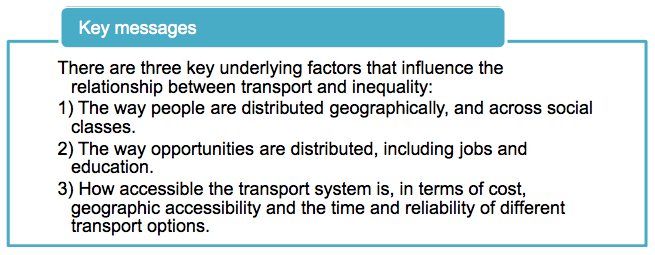 https://abs.twimg.com/emoji/v2/... draggable="false" alt="🏘️" title="Häuser" aria-label="Emoji: Häuser">https://abs.twimg.com/emoji/v2/... draggable="false" alt="🏢" title="Bürogebäude" aria-label="Emoji: Bürogebäude">Where people livehttps://abs.twimg.com/emoji/v2/... draggable="false" alt="2⃣" title="Tastenkappe Ziffer 2" aria-label="Emoji: Tastenkappe Ziffer 2"> https://abs.twimg.com/emoji/v2/... draggable="false" alt="🏫" title="Schule" aria-label="Emoji: Schule">https://abs.twimg.com/emoji/v2/... draggable="false" alt="🏬" title="Kaufhaus" aria-label="Emoji: Kaufhaus">Where opportunities (jobs & education) arehttps://abs.twimg.com/emoji/v2/... draggable="false" alt="3⃣" title="Tastenkappe Ziffer 3" aria-label="Emoji: Tastenkappe Ziffer 3"> https://abs.twimg.com/emoji/v2/... draggable="false" alt="🚌" title="Bus" aria-label="Emoji: Bus">https://abs.twimg.com/emoji/v2/... draggable="false" alt="🚊" title="Straßenbahn" aria-label="Emoji: Straßenbahn">How well they are connectedhttps://abs.twimg.com/emoji/v2/... draggable="false" alt="🚇" title="U-Bahn" aria-label="Emoji: U-Bahn">https://abs.twimg.com/emoji/v2/... draggable="false" alt="🚌" title="Bus" aria-label="Emoji: Bus">W/o regular, frequent & affordable transport to opportunities they are inaccessible to manyhttps://abs.twimg.com/emoji/v2/... draggable="false" alt="📑" title="Lesezeichen" aria-label="Emoji: Lesezeichen">https://abs.twimg.com/emoji/v2/... draggable="false" alt="➡️" title="Pfeil nach rechts" aria-label="Emoji: Pfeil nach rechts"> https://www.gov.uk/governmen..." title="Simply put, it breaks down to the following:https://abs.twimg.com/emoji/v2/... draggable="false" alt="1⃣" title="Tastenkappe Ziffer 1" aria-label="Emoji: Tastenkappe Ziffer 1"> https://abs.twimg.com/emoji/v2/... draggable="false" alt="🏘️" title="Häuser" aria-label="Emoji: Häuser">https://abs.twimg.com/emoji/v2/... draggable="false" alt="🏢" title="Bürogebäude" aria-label="Emoji: Bürogebäude">Where people livehttps://abs.twimg.com/emoji/v2/... draggable="false" alt="2⃣" title="Tastenkappe Ziffer 2" aria-label="Emoji: Tastenkappe Ziffer 2"> https://abs.twimg.com/emoji/v2/... draggable="false" alt="🏫" title="Schule" aria-label="Emoji: Schule">https://abs.twimg.com/emoji/v2/... draggable="false" alt="🏬" title="Kaufhaus" aria-label="Emoji: Kaufhaus">Where opportunities (jobs & education) arehttps://abs.twimg.com/emoji/v2/... draggable="false" alt="3⃣" title="Tastenkappe Ziffer 3" aria-label="Emoji: Tastenkappe Ziffer 3"> https://abs.twimg.com/emoji/v2/... draggable="false" alt="🚌" title="Bus" aria-label="Emoji: Bus">https://abs.twimg.com/emoji/v2/... draggable="false" alt="🚊" title="Straßenbahn" aria-label="Emoji: Straßenbahn">How well they are connectedhttps://abs.twimg.com/emoji/v2/... draggable="false" alt="🚇" title="U-Bahn" aria-label="Emoji: U-Bahn">https://abs.twimg.com/emoji/v2/... draggable="false" alt="🚌" title="Bus" aria-label="Emoji: Bus">W/o regular, frequent & affordable transport to opportunities they are inaccessible to manyhttps://abs.twimg.com/emoji/v2/... draggable="false" alt="📑" title="Lesezeichen" aria-label="Emoji: Lesezeichen">https://abs.twimg.com/emoji/v2/... draggable="false" alt="➡️" title="Pfeil nach rechts" aria-label="Emoji: Pfeil nach rechts"> https://www.gov.uk/governmen..." class="img-responsive" style="max-width:100%;"/>
https://abs.twimg.com/emoji/v2/... draggable="false" alt="🏘️" title="Häuser" aria-label="Emoji: Häuser">https://abs.twimg.com/emoji/v2/... draggable="false" alt="🏢" title="Bürogebäude" aria-label="Emoji: Bürogebäude">Where people livehttps://abs.twimg.com/emoji/v2/... draggable="false" alt="2⃣" title="Tastenkappe Ziffer 2" aria-label="Emoji: Tastenkappe Ziffer 2"> https://abs.twimg.com/emoji/v2/... draggable="false" alt="🏫" title="Schule" aria-label="Emoji: Schule">https://abs.twimg.com/emoji/v2/... draggable="false" alt="🏬" title="Kaufhaus" aria-label="Emoji: Kaufhaus">Where opportunities (jobs & education) arehttps://abs.twimg.com/emoji/v2/... draggable="false" alt="3⃣" title="Tastenkappe Ziffer 3" aria-label="Emoji: Tastenkappe Ziffer 3"> https://abs.twimg.com/emoji/v2/... draggable="false" alt="🚌" title="Bus" aria-label="Emoji: Bus">https://abs.twimg.com/emoji/v2/... draggable="false" alt="🚊" title="Straßenbahn" aria-label="Emoji: Straßenbahn">How well they are connectedhttps://abs.twimg.com/emoji/v2/... draggable="false" alt="🚇" title="U-Bahn" aria-label="Emoji: U-Bahn">https://abs.twimg.com/emoji/v2/... draggable="false" alt="🚌" title="Bus" aria-label="Emoji: Bus">W/o regular, frequent & affordable transport to opportunities they are inaccessible to manyhttps://abs.twimg.com/emoji/v2/... draggable="false" alt="📑" title="Lesezeichen" aria-label="Emoji: Lesezeichen">https://abs.twimg.com/emoji/v2/... draggable="false" alt="➡️" title="Pfeil nach rechts" aria-label="Emoji: Pfeil nach rechts"> https://www.gov.uk/governmen..." title="Simply put, it breaks down to the following:https://abs.twimg.com/emoji/v2/... draggable="false" alt="1⃣" title="Tastenkappe Ziffer 1" aria-label="Emoji: Tastenkappe Ziffer 1"> https://abs.twimg.com/emoji/v2/... draggable="false" alt="🏘️" title="Häuser" aria-label="Emoji: Häuser">https://abs.twimg.com/emoji/v2/... draggable="false" alt="🏢" title="Bürogebäude" aria-label="Emoji: Bürogebäude">Where people livehttps://abs.twimg.com/emoji/v2/... draggable="false" alt="2⃣" title="Tastenkappe Ziffer 2" aria-label="Emoji: Tastenkappe Ziffer 2"> https://abs.twimg.com/emoji/v2/... draggable="false" alt="🏫" title="Schule" aria-label="Emoji: Schule">https://abs.twimg.com/emoji/v2/... draggable="false" alt="🏬" title="Kaufhaus" aria-label="Emoji: Kaufhaus">Where opportunities (jobs & education) arehttps://abs.twimg.com/emoji/v2/... draggable="false" alt="3⃣" title="Tastenkappe Ziffer 3" aria-label="Emoji: Tastenkappe Ziffer 3"> https://abs.twimg.com/emoji/v2/... draggable="false" alt="🚌" title="Bus" aria-label="Emoji: Bus">https://abs.twimg.com/emoji/v2/... draggable="false" alt="🚊" title="Straßenbahn" aria-label="Emoji: Straßenbahn">How well they are connectedhttps://abs.twimg.com/emoji/v2/... draggable="false" alt="🚇" title="U-Bahn" aria-label="Emoji: U-Bahn">https://abs.twimg.com/emoji/v2/... draggable="false" alt="🚌" title="Bus" aria-label="Emoji: Bus">W/o regular, frequent & affordable transport to opportunities they are inaccessible to manyhttps://abs.twimg.com/emoji/v2/... draggable="false" alt="📑" title="Lesezeichen" aria-label="Emoji: Lesezeichen">https://abs.twimg.com/emoji/v2/... draggable="false" alt="➡️" title="Pfeil nach rechts" aria-label="Emoji: Pfeil nach rechts"> https://www.gov.uk/governmen..." class="img-responsive" style="max-width:100%;"/>
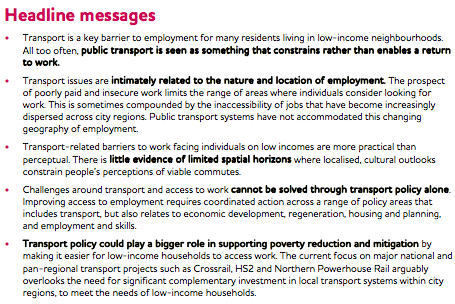 Poor transport = major barrier to employmenthttps://abs.twimg.com/emoji/v2/... draggable="false" alt="📕" title="Geschlossenes Buch" aria-label="Emoji: Geschlossenes Buch">https://abs.twimg.com/emoji/v2/... draggable="false" alt="⬇️" title="Pfeil nach unten" aria-label="Emoji: Pfeil nach unten"> @jrf_uk reports public transport in UK constrains instead of enables finding/keeping work https://www.jrf.org.uk/report/ta... class="Emoji" style="height:16px;" src=" " title="https://abs.twimg.com/emoji/v2/... draggable="false" alt="🚏" title="Bushaltestelle" aria-label="Emoji: Bushaltestelle">Poor transport = major barrier to employmenthttps://abs.twimg.com/emoji/v2/... draggable="false" alt="📕" title="Geschlossenes Buch" aria-label="Emoji: Geschlossenes Buch">https://abs.twimg.com/emoji/v2/... draggable="false" alt="⬇️" title="Pfeil nach unten" aria-label="Emoji: Pfeil nach unten"> @jrf_uk reports public transport in UK constrains instead of enables finding/keeping work https://www.jrf.org.uk/report/ta... class="Emoji" style="height:16px;" src=" " class="img-responsive" style="max-width:100%;"/>
Poor transport = major barrier to employmenthttps://abs.twimg.com/emoji/v2/... draggable="false" alt="📕" title="Geschlossenes Buch" aria-label="Emoji: Geschlossenes Buch">https://abs.twimg.com/emoji/v2/... draggable="false" alt="⬇️" title="Pfeil nach unten" aria-label="Emoji: Pfeil nach unten"> @jrf_uk reports public transport in UK constrains instead of enables finding/keeping work https://www.jrf.org.uk/report/ta... class="Emoji" style="height:16px;" src=" " title="https://abs.twimg.com/emoji/v2/... draggable="false" alt="🚏" title="Bushaltestelle" aria-label="Emoji: Bushaltestelle">Poor transport = major barrier to employmenthttps://abs.twimg.com/emoji/v2/... draggable="false" alt="📕" title="Geschlossenes Buch" aria-label="Emoji: Geschlossenes Buch">https://abs.twimg.com/emoji/v2/... draggable="false" alt="⬇️" title="Pfeil nach unten" aria-label="Emoji: Pfeil nach unten"> @jrf_uk reports public transport in UK constrains instead of enables finding/keeping work https://www.jrf.org.uk/report/ta... class="Emoji" style="height:16px;" src=" " class="img-responsive" style="max-width:100%;"/>
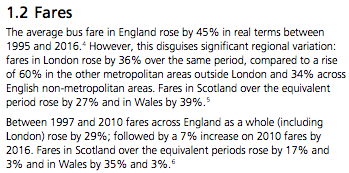 https://abs.twimg.com/emoji/v2/... draggable="false" alt="🚌" title="Bus" aria-label="Emoji: Bus">Cost /Affordability of #transport is key barrier to #employment & #education https://abs.twimg.com/emoji/v2/... draggable="false" alt="🚧" title="Baustellenschild" aria-label="Emoji: Baustellenschild">https://abs.twimg.com/emoji/v2/... draggable="false" alt="🧑🏽💼" title="Office worker (mittlerer Hautton)" aria-label="Emoji: Office worker (mittlerer Hautton)">https://abs.twimg.com/emoji/v2/... draggable="false" alt="👷🏽" title="Bauarbeiter (mittlerer Hautton)" aria-label="Emoji: Bauarbeiter (mittlerer Hautton)">https://abs.twimg.com/emoji/v2/... draggable="false" alt="🎫" title="Ticket" aria-label="Emoji: Ticket">https://abs.twimg.com/emoji/v2/... draggable="false" alt="💷" title="Banknote mit Pfund-Zeichen" aria-label="Emoji: Banknote mit Pfund-Zeichen">Low income households spend more of their income on commutinghttps://abs.twimg.com/emoji/v2/... draggable="false" alt="📈" title="Tabelle mit Aufwärtstrend" aria-label="Emoji: Tabelle mit Aufwärtstrend">25% compared to on average 13%https://abs.twimg.com/emoji/v2/... draggable="false" alt="➡️" title="Pfeil nach rechts" aria-label="Emoji: Pfeil nach rechts">limits where they look for/can get to workhttps://abs.twimg.com/emoji/v2/... draggable="false" alt="📊" title="Balkendiagramm" aria-label="Emoji: Balkendiagramm">Rise in bus fareshttps://abs.twimg.com/emoji/v2/... draggable="false" alt="➡️" title="Pfeil nach rechts" aria-label="Emoji: Pfeil nach rechts"> https://researchbriefings.files.parliament.uk/documents..." title="https://abs.twimg.com/emoji/v2/... draggable="false" alt="💷" title="Banknote mit Pfund-Zeichen" aria-label="Emoji: Banknote mit Pfund-Zeichen">https://abs.twimg.com/emoji/v2/... draggable="false" alt="🚌" title="Bus" aria-label="Emoji: Bus">Cost /Affordability of #transport is key barrier to #employment & #education https://abs.twimg.com/emoji/v2/... draggable="false" alt="🚧" title="Baustellenschild" aria-label="Emoji: Baustellenschild">https://abs.twimg.com/emoji/v2/... draggable="false" alt="🧑🏽💼" title="Office worker (mittlerer Hautton)" aria-label="Emoji: Office worker (mittlerer Hautton)">https://abs.twimg.com/emoji/v2/... draggable="false" alt="👷🏽" title="Bauarbeiter (mittlerer Hautton)" aria-label="Emoji: Bauarbeiter (mittlerer Hautton)">https://abs.twimg.com/emoji/v2/... draggable="false" alt="🎫" title="Ticket" aria-label="Emoji: Ticket">https://abs.twimg.com/emoji/v2/... draggable="false" alt="💷" title="Banknote mit Pfund-Zeichen" aria-label="Emoji: Banknote mit Pfund-Zeichen">Low income households spend more of their income on commutinghttps://abs.twimg.com/emoji/v2/... draggable="false" alt="📈" title="Tabelle mit Aufwärtstrend" aria-label="Emoji: Tabelle mit Aufwärtstrend">25% compared to on average 13%https://abs.twimg.com/emoji/v2/... draggable="false" alt="➡️" title="Pfeil nach rechts" aria-label="Emoji: Pfeil nach rechts">limits where they look for/can get to workhttps://abs.twimg.com/emoji/v2/... draggable="false" alt="📊" title="Balkendiagramm" aria-label="Emoji: Balkendiagramm">Rise in bus fareshttps://abs.twimg.com/emoji/v2/... draggable="false" alt="➡️" title="Pfeil nach rechts" aria-label="Emoji: Pfeil nach rechts"> https://researchbriefings.files.parliament.uk/documents..." class="img-responsive" style="max-width:100%;"/>
https://abs.twimg.com/emoji/v2/... draggable="false" alt="🚌" title="Bus" aria-label="Emoji: Bus">Cost /Affordability of #transport is key barrier to #employment & #education https://abs.twimg.com/emoji/v2/... draggable="false" alt="🚧" title="Baustellenschild" aria-label="Emoji: Baustellenschild">https://abs.twimg.com/emoji/v2/... draggable="false" alt="🧑🏽💼" title="Office worker (mittlerer Hautton)" aria-label="Emoji: Office worker (mittlerer Hautton)">https://abs.twimg.com/emoji/v2/... draggable="false" alt="👷🏽" title="Bauarbeiter (mittlerer Hautton)" aria-label="Emoji: Bauarbeiter (mittlerer Hautton)">https://abs.twimg.com/emoji/v2/... draggable="false" alt="🎫" title="Ticket" aria-label="Emoji: Ticket">https://abs.twimg.com/emoji/v2/... draggable="false" alt="💷" title="Banknote mit Pfund-Zeichen" aria-label="Emoji: Banknote mit Pfund-Zeichen">Low income households spend more of their income on commutinghttps://abs.twimg.com/emoji/v2/... draggable="false" alt="📈" title="Tabelle mit Aufwärtstrend" aria-label="Emoji: Tabelle mit Aufwärtstrend">25% compared to on average 13%https://abs.twimg.com/emoji/v2/... draggable="false" alt="➡️" title="Pfeil nach rechts" aria-label="Emoji: Pfeil nach rechts">limits where they look for/can get to workhttps://abs.twimg.com/emoji/v2/... draggable="false" alt="📊" title="Balkendiagramm" aria-label="Emoji: Balkendiagramm">Rise in bus fareshttps://abs.twimg.com/emoji/v2/... draggable="false" alt="➡️" title="Pfeil nach rechts" aria-label="Emoji: Pfeil nach rechts"> https://researchbriefings.files.parliament.uk/documents..." title="https://abs.twimg.com/emoji/v2/... draggable="false" alt="💷" title="Banknote mit Pfund-Zeichen" aria-label="Emoji: Banknote mit Pfund-Zeichen">https://abs.twimg.com/emoji/v2/... draggable="false" alt="🚌" title="Bus" aria-label="Emoji: Bus">Cost /Affordability of #transport is key barrier to #employment & #education https://abs.twimg.com/emoji/v2/... draggable="false" alt="🚧" title="Baustellenschild" aria-label="Emoji: Baustellenschild">https://abs.twimg.com/emoji/v2/... draggable="false" alt="🧑🏽💼" title="Office worker (mittlerer Hautton)" aria-label="Emoji: Office worker (mittlerer Hautton)">https://abs.twimg.com/emoji/v2/... draggable="false" alt="👷🏽" title="Bauarbeiter (mittlerer Hautton)" aria-label="Emoji: Bauarbeiter (mittlerer Hautton)">https://abs.twimg.com/emoji/v2/... draggable="false" alt="🎫" title="Ticket" aria-label="Emoji: Ticket">https://abs.twimg.com/emoji/v2/... draggable="false" alt="💷" title="Banknote mit Pfund-Zeichen" aria-label="Emoji: Banknote mit Pfund-Zeichen">Low income households spend more of their income on commutinghttps://abs.twimg.com/emoji/v2/... draggable="false" alt="📈" title="Tabelle mit Aufwärtstrend" aria-label="Emoji: Tabelle mit Aufwärtstrend">25% compared to on average 13%https://abs.twimg.com/emoji/v2/... draggable="false" alt="➡️" title="Pfeil nach rechts" aria-label="Emoji: Pfeil nach rechts">limits where they look for/can get to workhttps://abs.twimg.com/emoji/v2/... draggable="false" alt="📊" title="Balkendiagramm" aria-label="Emoji: Balkendiagramm">Rise in bus fareshttps://abs.twimg.com/emoji/v2/... draggable="false" alt="➡️" title="Pfeil nach rechts" aria-label="Emoji: Pfeil nach rechts"> https://researchbriefings.files.parliament.uk/documents..." class="img-responsive" style="max-width:100%;"/>
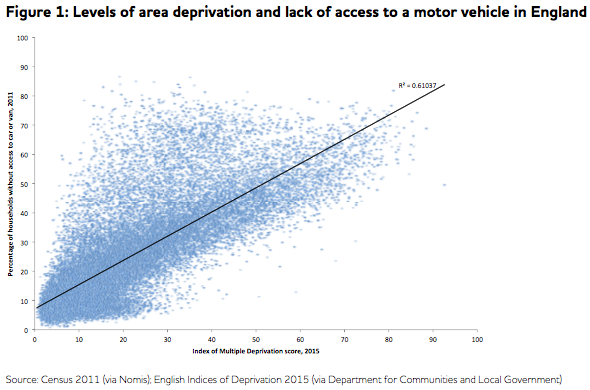 have less access to car/vanhttps://abs.twimg.com/emoji/v2/... draggable="false" alt="🚌" title="Bus" aria-label="Emoji: Bus">therefore more reliant on public transporthttps://abs.twimg.com/emoji/v2/... draggable="false" alt="🚏" title="Bushaltestelle" aria-label="Emoji: Bushaltestelle">more affected by poor public transport (eg infrequent, limited hours, unaffordable)https://abs.twimg.com/emoji/v2/... draggable="false" alt="⏱️" title="Stoppuhr" aria-label="Emoji: Stoppuhr">w/o car & poor #transit = longer travel timeshttps://abs.twimg.com/emoji/v2/... draggable="false" alt="📊" title="Balkendiagramm" aria-label="Emoji: Balkendiagramm">Deprivation & access to carfrom @jrf_uk https://abs.twimg.com/emoji/v2/... draggable="false" alt="📑" title="Lesezeichen" aria-label="Emoji: Lesezeichen">" title="Low income households:https://abs.twimg.com/emoji/v2/... draggable="false" alt="🚗" title="Auto" aria-label="Emoji: Auto">have less access to car/vanhttps://abs.twimg.com/emoji/v2/... draggable="false" alt="🚌" title="Bus" aria-label="Emoji: Bus">therefore more reliant on public transporthttps://abs.twimg.com/emoji/v2/... draggable="false" alt="🚏" title="Bushaltestelle" aria-label="Emoji: Bushaltestelle">more affected by poor public transport (eg infrequent, limited hours, unaffordable)https://abs.twimg.com/emoji/v2/... draggable="false" alt="⏱️" title="Stoppuhr" aria-label="Emoji: Stoppuhr">w/o car & poor #transit = longer travel timeshttps://abs.twimg.com/emoji/v2/... draggable="false" alt="📊" title="Balkendiagramm" aria-label="Emoji: Balkendiagramm">Deprivation & access to carfrom @jrf_uk https://abs.twimg.com/emoji/v2/... draggable="false" alt="📑" title="Lesezeichen" aria-label="Emoji: Lesezeichen">" class="img-responsive" style="max-width:100%;"/>
have less access to car/vanhttps://abs.twimg.com/emoji/v2/... draggable="false" alt="🚌" title="Bus" aria-label="Emoji: Bus">therefore more reliant on public transporthttps://abs.twimg.com/emoji/v2/... draggable="false" alt="🚏" title="Bushaltestelle" aria-label="Emoji: Bushaltestelle">more affected by poor public transport (eg infrequent, limited hours, unaffordable)https://abs.twimg.com/emoji/v2/... draggable="false" alt="⏱️" title="Stoppuhr" aria-label="Emoji: Stoppuhr">w/o car & poor #transit = longer travel timeshttps://abs.twimg.com/emoji/v2/... draggable="false" alt="📊" title="Balkendiagramm" aria-label="Emoji: Balkendiagramm">Deprivation & access to carfrom @jrf_uk https://abs.twimg.com/emoji/v2/... draggable="false" alt="📑" title="Lesezeichen" aria-label="Emoji: Lesezeichen">" title="Low income households:https://abs.twimg.com/emoji/v2/... draggable="false" alt="🚗" title="Auto" aria-label="Emoji: Auto">have less access to car/vanhttps://abs.twimg.com/emoji/v2/... draggable="false" alt="🚌" title="Bus" aria-label="Emoji: Bus">therefore more reliant on public transporthttps://abs.twimg.com/emoji/v2/... draggable="false" alt="🚏" title="Bushaltestelle" aria-label="Emoji: Bushaltestelle">more affected by poor public transport (eg infrequent, limited hours, unaffordable)https://abs.twimg.com/emoji/v2/... draggable="false" alt="⏱️" title="Stoppuhr" aria-label="Emoji: Stoppuhr">w/o car & poor #transit = longer travel timeshttps://abs.twimg.com/emoji/v2/... draggable="false" alt="📊" title="Balkendiagramm" aria-label="Emoji: Balkendiagramm">Deprivation & access to carfrom @jrf_uk https://abs.twimg.com/emoji/v2/... draggable="false" alt="📑" title="Lesezeichen" aria-label="Emoji: Lesezeichen">" class="img-responsive" style="max-width:100%;"/>
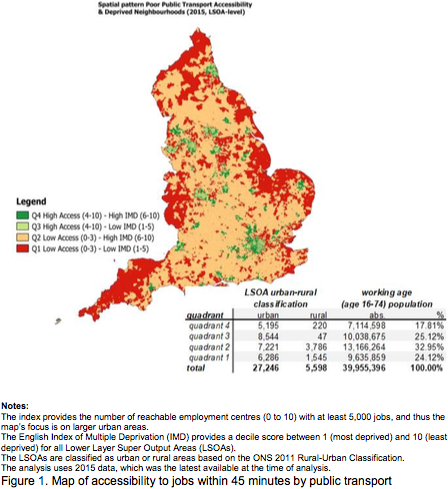 Access to jobs by public transport within 45min (avg UK commute) & areas of deprivationhttps://abs.twimg.com/emoji/v2/... draggable="false" alt="🏘️" title="Häuser" aria-label="Emoji: Häuser">Working population live in areas:https://abs.twimg.com/emoji/v2/... draggable="false" alt="🟠" title="Orangefarbener Kreis" aria-label="Emoji: Orangefarbener Kreis">57% with low access to jobshttps://abs.twimg.com/emoji/v2/... draggable="false" alt="🔴" title="Roter Kreis" aria-label="Emoji: Roter Kreis">25% with low access to jobs & high deprivationhttps://abs.twimg.com/emoji/v2/... draggable="false" alt="🧑🏿💼" title="Office worker (dunkler Hautton)" aria-label="Emoji: Office worker (dunkler Hautton)">https://abs.twimg.com/emoji/v2/... draggable="false" alt="👷🏼♀️" title="Woman construction worker (mittelheller Hautton)" aria-label="Emoji: Woman construction worker (mittelheller Hautton)">https://abs.twimg.com/emoji/v2/... draggable="false" alt="👩🏾💻" title="Woman technologist (durchschnittlich dunkler Hautton)" aria-label="Emoji: Woman technologist (durchschnittlich dunkler Hautton)">Job access has not improved since 2010https://abs.twimg.com/emoji/v2/... draggable="false" alt="📑" title="Lesezeichen" aria-label="Emoji: Lesezeichen">https://abs.twimg.com/emoji/v2/... draggable="false" alt="➡️" title="Pfeil nach rechts" aria-label="Emoji: Pfeil nach rechts"> https://www.gov.uk/governmen..." title="https://abs.twimg.com/emoji/v2/... draggable="false" alt="🚥" title="Horizontale Verkehrsampel" aria-label="Emoji: Horizontale Verkehrsampel">Access to jobs by public transport within 45min (avg UK commute) & areas of deprivationhttps://abs.twimg.com/emoji/v2/... draggable="false" alt="🏘️" title="Häuser" aria-label="Emoji: Häuser">Working population live in areas:https://abs.twimg.com/emoji/v2/... draggable="false" alt="🟠" title="Orangefarbener Kreis" aria-label="Emoji: Orangefarbener Kreis">57% with low access to jobshttps://abs.twimg.com/emoji/v2/... draggable="false" alt="🔴" title="Roter Kreis" aria-label="Emoji: Roter Kreis">25% with low access to jobs & high deprivationhttps://abs.twimg.com/emoji/v2/... draggable="false" alt="🧑🏿💼" title="Office worker (dunkler Hautton)" aria-label="Emoji: Office worker (dunkler Hautton)">https://abs.twimg.com/emoji/v2/... draggable="false" alt="👷🏼♀️" title="Woman construction worker (mittelheller Hautton)" aria-label="Emoji: Woman construction worker (mittelheller Hautton)">https://abs.twimg.com/emoji/v2/... draggable="false" alt="👩🏾💻" title="Woman technologist (durchschnittlich dunkler Hautton)" aria-label="Emoji: Woman technologist (durchschnittlich dunkler Hautton)">Job access has not improved since 2010https://abs.twimg.com/emoji/v2/... draggable="false" alt="📑" title="Lesezeichen" aria-label="Emoji: Lesezeichen">https://abs.twimg.com/emoji/v2/... draggable="false" alt="➡️" title="Pfeil nach rechts" aria-label="Emoji: Pfeil nach rechts"> https://www.gov.uk/governmen..." class="img-responsive" style="max-width:100%;"/>
Access to jobs by public transport within 45min (avg UK commute) & areas of deprivationhttps://abs.twimg.com/emoji/v2/... draggable="false" alt="🏘️" title="Häuser" aria-label="Emoji: Häuser">Working population live in areas:https://abs.twimg.com/emoji/v2/... draggable="false" alt="🟠" title="Orangefarbener Kreis" aria-label="Emoji: Orangefarbener Kreis">57% with low access to jobshttps://abs.twimg.com/emoji/v2/... draggable="false" alt="🔴" title="Roter Kreis" aria-label="Emoji: Roter Kreis">25% with low access to jobs & high deprivationhttps://abs.twimg.com/emoji/v2/... draggable="false" alt="🧑🏿💼" title="Office worker (dunkler Hautton)" aria-label="Emoji: Office worker (dunkler Hautton)">https://abs.twimg.com/emoji/v2/... draggable="false" alt="👷🏼♀️" title="Woman construction worker (mittelheller Hautton)" aria-label="Emoji: Woman construction worker (mittelheller Hautton)">https://abs.twimg.com/emoji/v2/... draggable="false" alt="👩🏾💻" title="Woman technologist (durchschnittlich dunkler Hautton)" aria-label="Emoji: Woman technologist (durchschnittlich dunkler Hautton)">Job access has not improved since 2010https://abs.twimg.com/emoji/v2/... draggable="false" alt="📑" title="Lesezeichen" aria-label="Emoji: Lesezeichen">https://abs.twimg.com/emoji/v2/... draggable="false" alt="➡️" title="Pfeil nach rechts" aria-label="Emoji: Pfeil nach rechts"> https://www.gov.uk/governmen..." title="https://abs.twimg.com/emoji/v2/... draggable="false" alt="🚥" title="Horizontale Verkehrsampel" aria-label="Emoji: Horizontale Verkehrsampel">Access to jobs by public transport within 45min (avg UK commute) & areas of deprivationhttps://abs.twimg.com/emoji/v2/... draggable="false" alt="🏘️" title="Häuser" aria-label="Emoji: Häuser">Working population live in areas:https://abs.twimg.com/emoji/v2/... draggable="false" alt="🟠" title="Orangefarbener Kreis" aria-label="Emoji: Orangefarbener Kreis">57% with low access to jobshttps://abs.twimg.com/emoji/v2/... draggable="false" alt="🔴" title="Roter Kreis" aria-label="Emoji: Roter Kreis">25% with low access to jobs & high deprivationhttps://abs.twimg.com/emoji/v2/... draggable="false" alt="🧑🏿💼" title="Office worker (dunkler Hautton)" aria-label="Emoji: Office worker (dunkler Hautton)">https://abs.twimg.com/emoji/v2/... draggable="false" alt="👷🏼♀️" title="Woman construction worker (mittelheller Hautton)" aria-label="Emoji: Woman construction worker (mittelheller Hautton)">https://abs.twimg.com/emoji/v2/... draggable="false" alt="👩🏾💻" title="Woman technologist (durchschnittlich dunkler Hautton)" aria-label="Emoji: Woman technologist (durchschnittlich dunkler Hautton)">Job access has not improved since 2010https://abs.twimg.com/emoji/v2/... draggable="false" alt="📑" title="Lesezeichen" aria-label="Emoji: Lesezeichen">https://abs.twimg.com/emoji/v2/... draggable="false" alt="➡️" title="Pfeil nach rechts" aria-label="Emoji: Pfeil nach rechts"> https://www.gov.uk/governmen..." class="img-responsive" style="max-width:100%;"/>
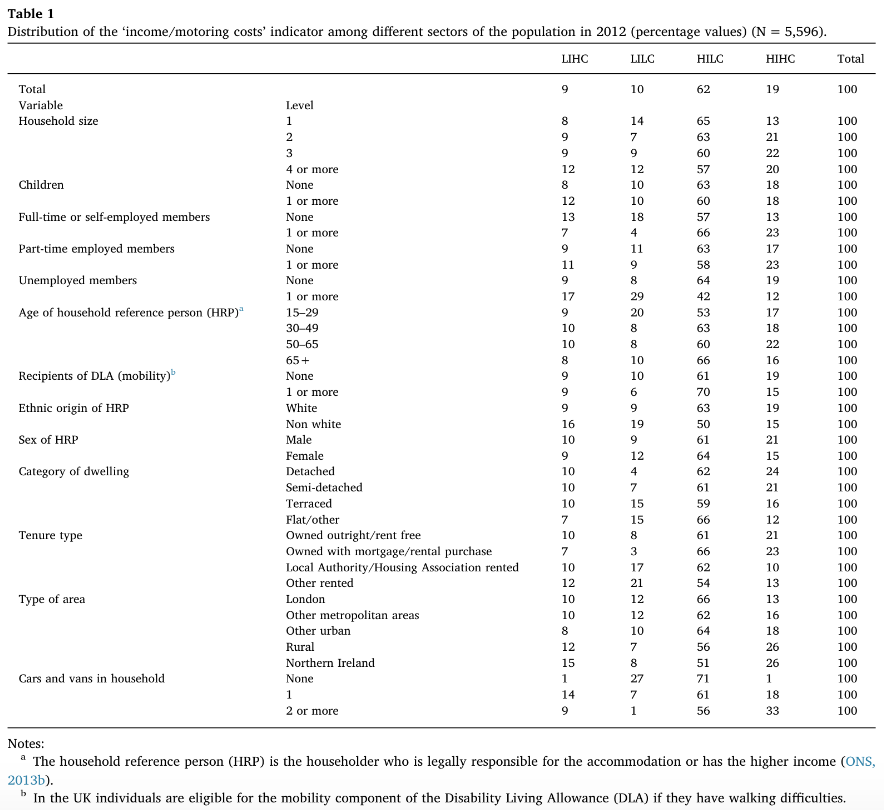 Many see a car as a necessity b/c of poor alternativeshttps://abs.twimg.com/emoji/v2/... draggable="false" alt="🚏" title="Bushaltestelle" aria-label="Emoji: Bushaltestelle">But for many a car is unaffordablehttps://abs.twimg.com/emoji/v2/... draggable="false" alt="💷" title="Banknote mit Pfund-Zeichen" aria-label="Emoji: Banknote mit Pfund-Zeichen">9% households struggle w/ high motoring costs on low incomesRising to:https://abs.twimg.com/emoji/v2/... draggable="false" alt="👪" title="Familie" aria-label="Emoji: Familie">12% w/ children, https://abs.twimg.com/emoji/v2/... draggable="false" alt="💻" title="Computer" aria-label="Emoji: Computer">13% w/o anyone in a full-time jobhttps://abs.twimg.com/emoji/v2/... draggable="false" alt="🏘️" title="Häuser" aria-label="Emoji: Häuser">17% w/ 1 or more w/o a job https://www.sciencedirect.com/science/a..." title="https://abs.twimg.com/emoji/v2/... draggable="false" alt="🚗" title="Auto" aria-label="Emoji: Auto">Many see a car as a necessity b/c of poor alternativeshttps://abs.twimg.com/emoji/v2/... draggable="false" alt="🚏" title="Bushaltestelle" aria-label="Emoji: Bushaltestelle">But for many a car is unaffordablehttps://abs.twimg.com/emoji/v2/... draggable="false" alt="💷" title="Banknote mit Pfund-Zeichen" aria-label="Emoji: Banknote mit Pfund-Zeichen">9% households struggle w/ high motoring costs on low incomesRising to:https://abs.twimg.com/emoji/v2/... draggable="false" alt="👪" title="Familie" aria-label="Emoji: Familie">12% w/ children, https://abs.twimg.com/emoji/v2/... draggable="false" alt="💻" title="Computer" aria-label="Emoji: Computer">13% w/o anyone in a full-time jobhttps://abs.twimg.com/emoji/v2/... draggable="false" alt="🏘️" title="Häuser" aria-label="Emoji: Häuser">17% w/ 1 or more w/o a job https://www.sciencedirect.com/science/a...">
Many see a car as a necessity b/c of poor alternativeshttps://abs.twimg.com/emoji/v2/... draggable="false" alt="🚏" title="Bushaltestelle" aria-label="Emoji: Bushaltestelle">But for many a car is unaffordablehttps://abs.twimg.com/emoji/v2/... draggable="false" alt="💷" title="Banknote mit Pfund-Zeichen" aria-label="Emoji: Banknote mit Pfund-Zeichen">9% households struggle w/ high motoring costs on low incomesRising to:https://abs.twimg.com/emoji/v2/... draggable="false" alt="👪" title="Familie" aria-label="Emoji: Familie">12% w/ children, https://abs.twimg.com/emoji/v2/... draggable="false" alt="💻" title="Computer" aria-label="Emoji: Computer">13% w/o anyone in a full-time jobhttps://abs.twimg.com/emoji/v2/... draggable="false" alt="🏘️" title="Häuser" aria-label="Emoji: Häuser">17% w/ 1 or more w/o a job https://www.sciencedirect.com/science/a..." title="https://abs.twimg.com/emoji/v2/... draggable="false" alt="🚗" title="Auto" aria-label="Emoji: Auto">Many see a car as a necessity b/c of poor alternativeshttps://abs.twimg.com/emoji/v2/... draggable="false" alt="🚏" title="Bushaltestelle" aria-label="Emoji: Bushaltestelle">But for many a car is unaffordablehttps://abs.twimg.com/emoji/v2/... draggable="false" alt="💷" title="Banknote mit Pfund-Zeichen" aria-label="Emoji: Banknote mit Pfund-Zeichen">9% households struggle w/ high motoring costs on low incomesRising to:https://abs.twimg.com/emoji/v2/... draggable="false" alt="👪" title="Familie" aria-label="Emoji: Familie">12% w/ children, https://abs.twimg.com/emoji/v2/... draggable="false" alt="💻" title="Computer" aria-label="Emoji: Computer">13% w/o anyone in a full-time jobhttps://abs.twimg.com/emoji/v2/... draggable="false" alt="🏘️" title="Häuser" aria-label="Emoji: Häuser">17% w/ 1 or more w/o a job https://www.sciencedirect.com/science/a...">
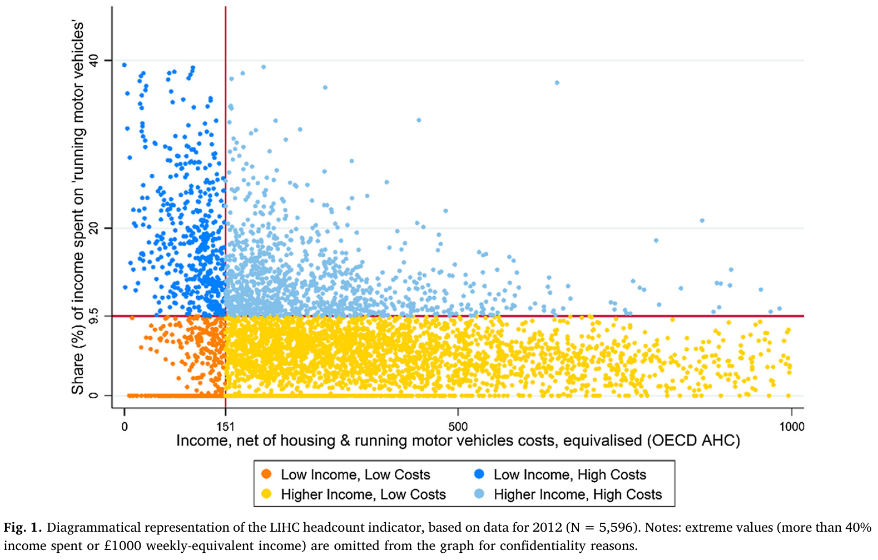 Many see a car as a necessity b/c of poor alternativeshttps://abs.twimg.com/emoji/v2/... draggable="false" alt="🚏" title="Bushaltestelle" aria-label="Emoji: Bushaltestelle">But for many a car is unaffordablehttps://abs.twimg.com/emoji/v2/... draggable="false" alt="💷" title="Banknote mit Pfund-Zeichen" aria-label="Emoji: Banknote mit Pfund-Zeichen">9% households struggle w/ high motoring costs on low incomesRising to:https://abs.twimg.com/emoji/v2/... draggable="false" alt="👪" title="Familie" aria-label="Emoji: Familie">12% w/ children, https://abs.twimg.com/emoji/v2/... draggable="false" alt="💻" title="Computer" aria-label="Emoji: Computer">13% w/o anyone in a full-time jobhttps://abs.twimg.com/emoji/v2/... draggable="false" alt="🏘️" title="Häuser" aria-label="Emoji: Häuser">17% w/ 1 or more w/o a job https://www.sciencedirect.com/science/a..." title="https://abs.twimg.com/emoji/v2/... draggable="false" alt="🚗" title="Auto" aria-label="Emoji: Auto">Many see a car as a necessity b/c of poor alternativeshttps://abs.twimg.com/emoji/v2/... draggable="false" alt="🚏" title="Bushaltestelle" aria-label="Emoji: Bushaltestelle">But for many a car is unaffordablehttps://abs.twimg.com/emoji/v2/... draggable="false" alt="💷" title="Banknote mit Pfund-Zeichen" aria-label="Emoji: Banknote mit Pfund-Zeichen">9% households struggle w/ high motoring costs on low incomesRising to:https://abs.twimg.com/emoji/v2/... draggable="false" alt="👪" title="Familie" aria-label="Emoji: Familie">12% w/ children, https://abs.twimg.com/emoji/v2/... draggable="false" alt="💻" title="Computer" aria-label="Emoji: Computer">13% w/o anyone in a full-time jobhttps://abs.twimg.com/emoji/v2/... draggable="false" alt="🏘️" title="Häuser" aria-label="Emoji: Häuser">17% w/ 1 or more w/o a job https://www.sciencedirect.com/science/a...">
Many see a car as a necessity b/c of poor alternativeshttps://abs.twimg.com/emoji/v2/... draggable="false" alt="🚏" title="Bushaltestelle" aria-label="Emoji: Bushaltestelle">But for many a car is unaffordablehttps://abs.twimg.com/emoji/v2/... draggable="false" alt="💷" title="Banknote mit Pfund-Zeichen" aria-label="Emoji: Banknote mit Pfund-Zeichen">9% households struggle w/ high motoring costs on low incomesRising to:https://abs.twimg.com/emoji/v2/... draggable="false" alt="👪" title="Familie" aria-label="Emoji: Familie">12% w/ children, https://abs.twimg.com/emoji/v2/... draggable="false" alt="💻" title="Computer" aria-label="Emoji: Computer">13% w/o anyone in a full-time jobhttps://abs.twimg.com/emoji/v2/... draggable="false" alt="🏘️" title="Häuser" aria-label="Emoji: Häuser">17% w/ 1 or more w/o a job https://www.sciencedirect.com/science/a..." title="https://abs.twimg.com/emoji/v2/... draggable="false" alt="🚗" title="Auto" aria-label="Emoji: Auto">Many see a car as a necessity b/c of poor alternativeshttps://abs.twimg.com/emoji/v2/... draggable="false" alt="🚏" title="Bushaltestelle" aria-label="Emoji: Bushaltestelle">But for many a car is unaffordablehttps://abs.twimg.com/emoji/v2/... draggable="false" alt="💷" title="Banknote mit Pfund-Zeichen" aria-label="Emoji: Banknote mit Pfund-Zeichen">9% households struggle w/ high motoring costs on low incomesRising to:https://abs.twimg.com/emoji/v2/... draggable="false" alt="👪" title="Familie" aria-label="Emoji: Familie">12% w/ children, https://abs.twimg.com/emoji/v2/... draggable="false" alt="💻" title="Computer" aria-label="Emoji: Computer">13% w/o anyone in a full-time jobhttps://abs.twimg.com/emoji/v2/... draggable="false" alt="🏘️" title="Häuser" aria-label="Emoji: Häuser">17% w/ 1 or more w/o a job https://www.sciencedirect.com/science/a...">
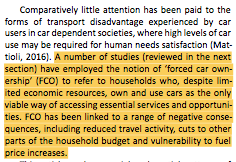 7% UK households in forced car ownership (FCO)https://abs.twimg.com/emoji/v2/... draggable="false" alt="🚗" title="Auto" aria-label="Emoji: Auto">FCO=having car b/c seen as only viable travel option but can& #39;t afford it Households w/ FCO https://abs.twimg.com/emoji/v2/... draggable="false" alt="💡" title="Elektrische Glühbirne" aria-label="Emoji: Elektrische Glühbirne">51% unpaid utility billshttps://abs.twimg.com/emoji/v2/... draggable="false" alt="🏘️" title="Häuser" aria-label="Emoji: Häuser">46% can& #39;t heat home11-12% low income households in FCO (70% higher than avg)https://abs.twimg.com/emoji/v2/... draggable="false" alt="📑" title="Lesezeichen" aria-label="Emoji: Lesezeichen"> https://eprints.whiterose.ac.uk/122016/&q..." title="https://abs.twimg.com/emoji/v2/... draggable="false" alt="🚏" title="Bushaltestelle" aria-label="Emoji: Bushaltestelle">7% UK households in forced car ownership (FCO)https://abs.twimg.com/emoji/v2/... draggable="false" alt="🚗" title="Auto" aria-label="Emoji: Auto">FCO=having car b/c seen as only viable travel option but can& #39;t afford it Households w/ FCO https://abs.twimg.com/emoji/v2/... draggable="false" alt="💡" title="Elektrische Glühbirne" aria-label="Emoji: Elektrische Glühbirne">51% unpaid utility billshttps://abs.twimg.com/emoji/v2/... draggable="false" alt="🏘️" title="Häuser" aria-label="Emoji: Häuser">46% can& #39;t heat home11-12% low income households in FCO (70% higher than avg)https://abs.twimg.com/emoji/v2/... draggable="false" alt="📑" title="Lesezeichen" aria-label="Emoji: Lesezeichen"> https://eprints.whiterose.ac.uk/122016/&q...">
7% UK households in forced car ownership (FCO)https://abs.twimg.com/emoji/v2/... draggable="false" alt="🚗" title="Auto" aria-label="Emoji: Auto">FCO=having car b/c seen as only viable travel option but can& #39;t afford it Households w/ FCO https://abs.twimg.com/emoji/v2/... draggable="false" alt="💡" title="Elektrische Glühbirne" aria-label="Emoji: Elektrische Glühbirne">51% unpaid utility billshttps://abs.twimg.com/emoji/v2/... draggable="false" alt="🏘️" title="Häuser" aria-label="Emoji: Häuser">46% can& #39;t heat home11-12% low income households in FCO (70% higher than avg)https://abs.twimg.com/emoji/v2/... draggable="false" alt="📑" title="Lesezeichen" aria-label="Emoji: Lesezeichen"> https://eprints.whiterose.ac.uk/122016/&q..." title="https://abs.twimg.com/emoji/v2/... draggable="false" alt="🚏" title="Bushaltestelle" aria-label="Emoji: Bushaltestelle">7% UK households in forced car ownership (FCO)https://abs.twimg.com/emoji/v2/... draggable="false" alt="🚗" title="Auto" aria-label="Emoji: Auto">FCO=having car b/c seen as only viable travel option but can& #39;t afford it Households w/ FCO https://abs.twimg.com/emoji/v2/... draggable="false" alt="💡" title="Elektrische Glühbirne" aria-label="Emoji: Elektrische Glühbirne">51% unpaid utility billshttps://abs.twimg.com/emoji/v2/... draggable="false" alt="🏘️" title="Häuser" aria-label="Emoji: Häuser">46% can& #39;t heat home11-12% low income households in FCO (70% higher than avg)https://abs.twimg.com/emoji/v2/... draggable="false" alt="📑" title="Lesezeichen" aria-label="Emoji: Lesezeichen"> https://eprints.whiterose.ac.uk/122016/&q...">
 7% UK households in forced car ownership (FCO)https://abs.twimg.com/emoji/v2/... draggable="false" alt="🚗" title="Auto" aria-label="Emoji: Auto">FCO=having car b/c seen as only viable travel option but can& #39;t afford it Households w/ FCO https://abs.twimg.com/emoji/v2/... draggable="false" alt="💡" title="Elektrische Glühbirne" aria-label="Emoji: Elektrische Glühbirne">51% unpaid utility billshttps://abs.twimg.com/emoji/v2/... draggable="false" alt="🏘️" title="Häuser" aria-label="Emoji: Häuser">46% can& #39;t heat home11-12% low income households in FCO (70% higher than avg)https://abs.twimg.com/emoji/v2/... draggable="false" alt="📑" title="Lesezeichen" aria-label="Emoji: Lesezeichen"> https://eprints.whiterose.ac.uk/122016/&q..." title="https://abs.twimg.com/emoji/v2/... draggable="false" alt="🚏" title="Bushaltestelle" aria-label="Emoji: Bushaltestelle">7% UK households in forced car ownership (FCO)https://abs.twimg.com/emoji/v2/... draggable="false" alt="🚗" title="Auto" aria-label="Emoji: Auto">FCO=having car b/c seen as only viable travel option but can& #39;t afford it Households w/ FCO https://abs.twimg.com/emoji/v2/... draggable="false" alt="💡" title="Elektrische Glühbirne" aria-label="Emoji: Elektrische Glühbirne">51% unpaid utility billshttps://abs.twimg.com/emoji/v2/... draggable="false" alt="🏘️" title="Häuser" aria-label="Emoji: Häuser">46% can& #39;t heat home11-12% low income households in FCO (70% higher than avg)https://abs.twimg.com/emoji/v2/... draggable="false" alt="📑" title="Lesezeichen" aria-label="Emoji: Lesezeichen"> https://eprints.whiterose.ac.uk/122016/&q...">
7% UK households in forced car ownership (FCO)https://abs.twimg.com/emoji/v2/... draggable="false" alt="🚗" title="Auto" aria-label="Emoji: Auto">FCO=having car b/c seen as only viable travel option but can& #39;t afford it Households w/ FCO https://abs.twimg.com/emoji/v2/... draggable="false" alt="💡" title="Elektrische Glühbirne" aria-label="Emoji: Elektrische Glühbirne">51% unpaid utility billshttps://abs.twimg.com/emoji/v2/... draggable="false" alt="🏘️" title="Häuser" aria-label="Emoji: Häuser">46% can& #39;t heat home11-12% low income households in FCO (70% higher than avg)https://abs.twimg.com/emoji/v2/... draggable="false" alt="📑" title="Lesezeichen" aria-label="Emoji: Lesezeichen"> https://eprints.whiterose.ac.uk/122016/&q..." title="https://abs.twimg.com/emoji/v2/... draggable="false" alt="🚏" title="Bushaltestelle" aria-label="Emoji: Bushaltestelle">7% UK households in forced car ownership (FCO)https://abs.twimg.com/emoji/v2/... draggable="false" alt="🚗" title="Auto" aria-label="Emoji: Auto">FCO=having car b/c seen as only viable travel option but can& #39;t afford it Households w/ FCO https://abs.twimg.com/emoji/v2/... draggable="false" alt="💡" title="Elektrische Glühbirne" aria-label="Emoji: Elektrische Glühbirne">51% unpaid utility billshttps://abs.twimg.com/emoji/v2/... draggable="false" alt="🏘️" title="Häuser" aria-label="Emoji: Häuser">46% can& #39;t heat home11-12% low income households in FCO (70% higher than avg)https://abs.twimg.com/emoji/v2/... draggable="false" alt="📑" title="Lesezeichen" aria-label="Emoji: Lesezeichen"> https://eprints.whiterose.ac.uk/122016/&q...">


